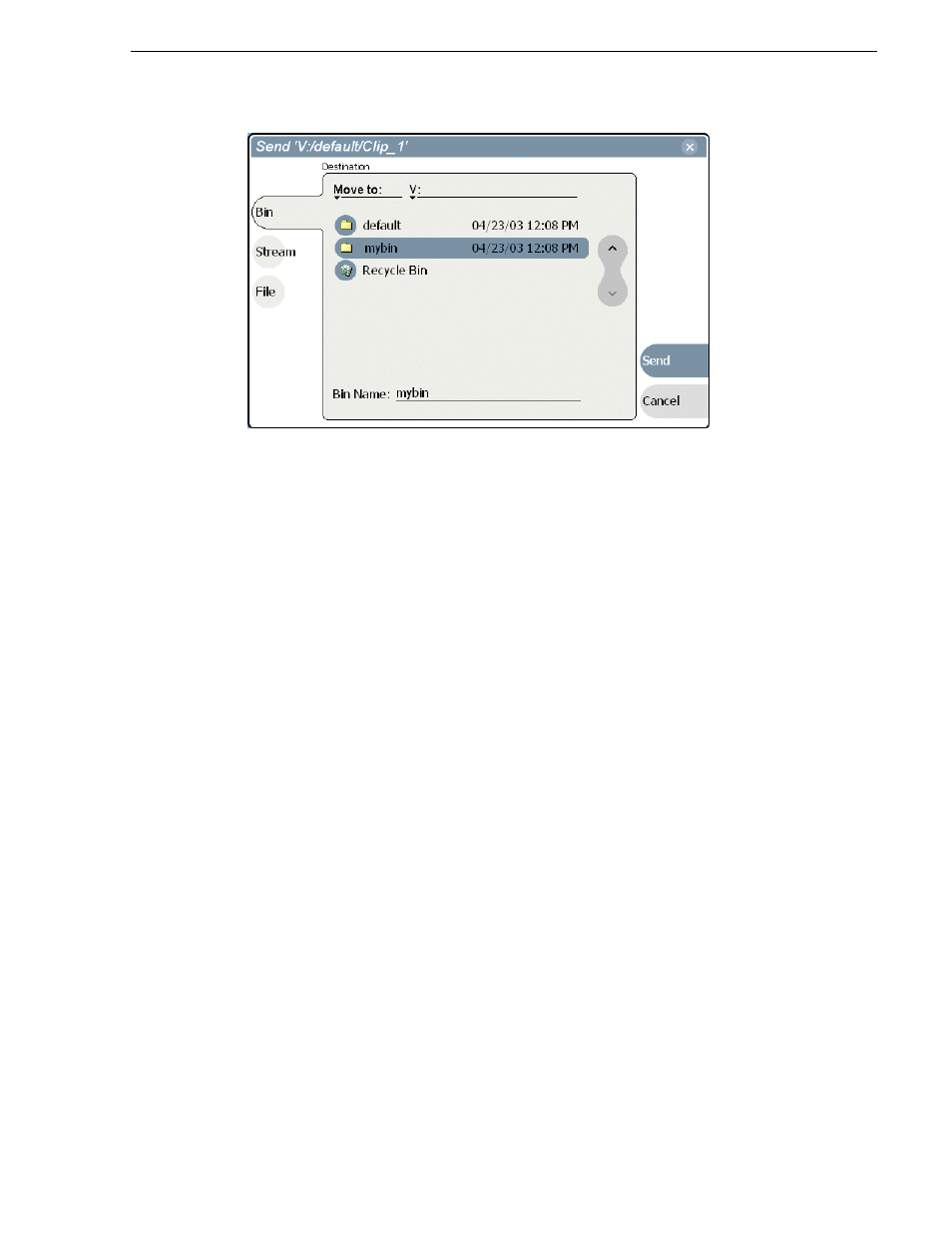Deleting an asset – Grass Valley Turbo iDDR v.2.3 User Manual
Page 227

Turbo iDDR User Guide
227
Working with assets
5. Click the
Send
button to close the Send dialog box and copy the file.
NOTE: Copy is a background task and can be monitored using the Transfer Monitor.
Refer to
“Monitoring media file transfers” on page 124
.
Deleting an asset
You can delete assets to free storage space. You can safely delete a clip without
harming the subclips, playlists, and programs created from it. The media referenced
by subclips, playlists, and programs is preserved when the clip is deleted. Once the
source clip is deleted, subclips and playlist events retain an extra 1 second of media
before and after their mark points to allow some trimming.
Deleted assets are moved to the Recycle Bin unless the bypass Recycle Bin option is
used. (
See “Bypassing the Recycle Bin when deleting” on page 230
.) You must empty
the Recycle Bin to free storage space.
To delete an asset:
1. Select the asset or assets in the
Asset List
.
2. Select
Delete
using one of the following:
• Select
Clips | Delete
, or
• Select
Delete
in the
asset context menu
, or
• Click the
Delete
button in the Clips Pane.
If the Delete button is not displayed in the Clips Pane, refer to
in
See “Guide to using the Clips Pane” on page 214
.
A progress dialog appears when deleting multiple assets. If the selected asset is
contained in the Recycle Bin, it is permanently removed; otherwise, it is moved
from its original bin into the Recycle Bin. If an item of the same name is already in
the Recycle Bin, the new item is automatically renamed. (See also
See “Bypassing
the Recycle Bin when deleting” on page 230
.)
NOTE: Assets that are locked or in use cannot be deleted.
